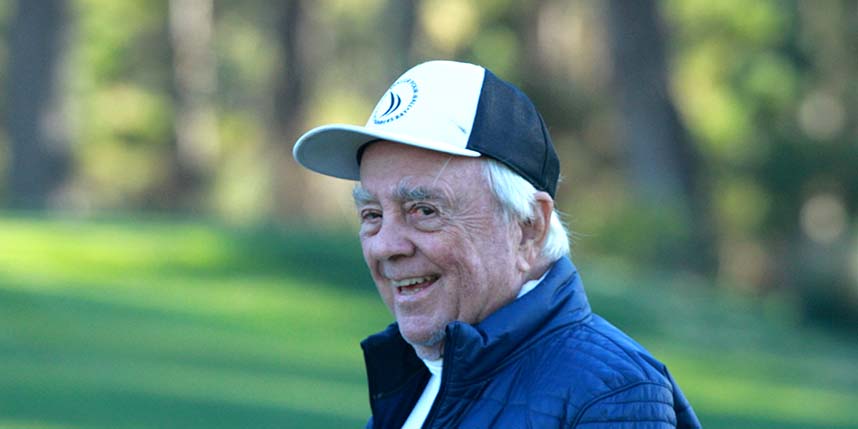Architect Robert Trent Jones, Jr. Visits Poppy Hills for Refinements Project
December 3, 2021 / by Jerry Stewart

Poppy Hills Golf Course in Pebble Beach had a special visitor earlier this week.
Architect Robert Trent Jones, Jr., who originally designed Poppy Hills when it first opened in 1986, was there to review progress on a current refinements project.
The project primarily involves modifying the greens on the par-3 2nd and par-4 7th holes and the installation of a new practice green. Some modest teeing ground enhancements are also being implemented.
The course is owned and operated by the Northern California Golf Association, whose headquarters are located at Poppy Hills.
“We don’t want to make the holes easier, we want to make them better,” said Jones, who also oversaw the acclaimed 2014 Poppy Hills renovation, which at the time included returning every hole to its natural elevation along the forest floor, sand-capping the entire course and the installation of a state-of-the-art irrigation system. “The greens are the heart of the golf course. It’s like performing open heart surgery. You have to do it carefully. You don’t want to kill the patient.”
The green on the par-3 #2 hole has as Jones described it always been a “nemesis” due to its location. The green sits on the other side of a ravine, which players must carry with their tee shot.
 “The original idea for No.2 was to have two separate greens. In the 2014 renovation, it went back to being one green, but it still feels like two greens—kind of a bowl on the right and a plateau on the left behind the greenside bunker which requires a very strong shot over the bunker and not turning the ball over. Because if you turn it over, you’re on the third tee,” Jones said.
“The original idea for No.2 was to have two separate greens. In the 2014 renovation, it went back to being one green, but it still feels like two greens—kind of a bowl on the right and a plateau on the left behind the greenside bunker which requires a very strong shot over the bunker and not turning the ball over. Because if you turn it over, you’re on the third tee,” Jones said.
According to Jones, the new green on #2 will be softened.
“We’ll make it more transitional, make it feel like it’s not broken by the contours,” Jones said. “That way, if you are on the wrong side, you’ll still have a chance. Right now, if you’re on the wrong side, you can putt it right off the green.”
As per the green on #7, while it’s a large green (6,000 square feet) the back-flagstick position is currently difficult to access for the average player.
Jones said that green will also see a reduction in contours to ease transition.
“The green on #7 is currently in three sections—front middle, back left and back right. The problem is the area within the green is small,” Jones said. “We want to make it so that if you’re on the green, you can transition from one part to another part without trembling.”
Jones said that on #12 the second bunker on the left side of the fairway may be modified to provide a more generous landing area on that side of the fairway. The new practice green will also feature less contours, resulting in more hole locations and enabling more players to use the green for events including NCGA championships.
Jones overall said the course remains “perfect” in his eyes.
“I’m very happy with the course. I think it’s one of our great works,” he said.
When opened in 1986, Poppy Hills became the first course to be owned and operated by an allied golf association. From 1991 through 2009, the course was one of the three venues used during the annual AT&T Pebble Beach Pro-Am. It also previously was a host venue for the PGA Tour Champions PURE Insurance Championship Impacting The First Tee and in 2018 hosted the U.S. Girls’ Junior Championship.
The Poppy Hills refinement project is expected to be completed by late January 2022. During the project, the course remains open and playable in a modified 18-hole form. However, temporary greens are in use for holes #2 and #7, with hole #3 playing shorter during the bunker improvement work.
For more info and to follow the progress of the project, please visit the Poppy Hills blog by CLICKING HERE